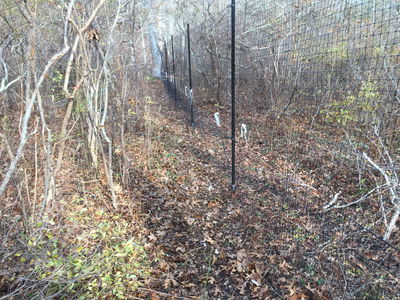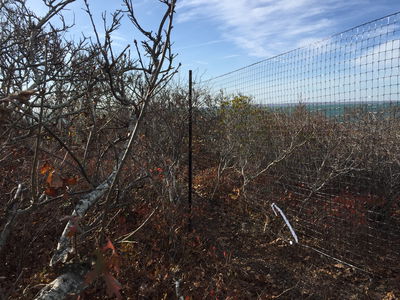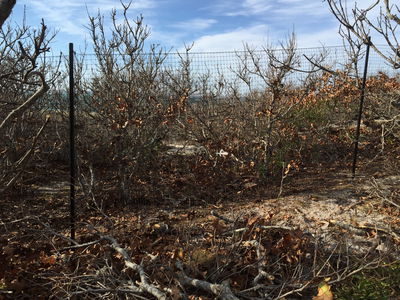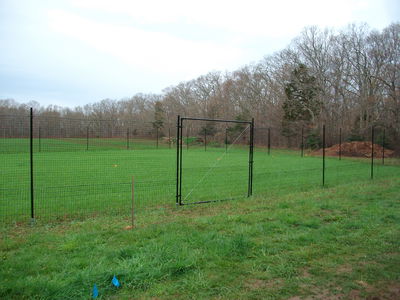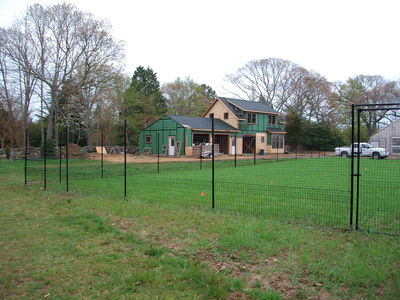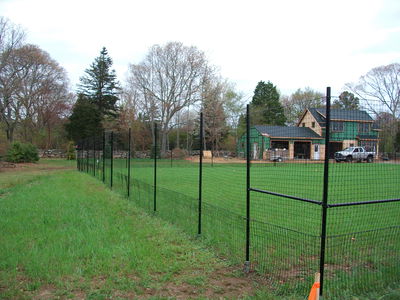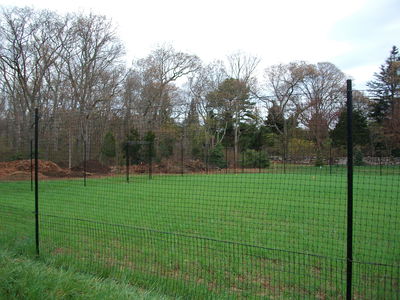Safeguard your garden with effective deer fences and compare leading deer fence kits for optimal protection. Choose from complete kits or individual parts to keep your plants safe from deer damage, with high-quality materials built to withstand outdoor conditions. Typical applications include:
- Preventing deer browsing (surrounding bushes for example like arborvitae)
- Surrounding a small area like a garden where deer can travel all the way around
- Creating backyard area (starting at a house, going into a backyard area, then back to the house again)
- Surrounding the complete perimeter of an area (along a complete property line) – this can include wide driveway gates to protect driveways or deer grates (concrete or metal slatted fixtures inset into a driveway that deer don't jump or step over, similar to cattle grates)
A deer fence kit is a selection of fencing, fence posts, accessories and hardware to build a complete solution to keep out deer starting from nothing.
Most of our deer fences are actual physical fences (not solely electric and cannot fail due to broken wires, dead batteries, etc). They are engineered to keep out many different animals besides deer, depending on the options you choose. They also make great pet fences to keep in dogs and with special no climb hardware, cats and other climbing animals.
Deer Fencing Types - Choosing the Right Fence
There are 1000+ fence kits, combinations and options within each type of deer fence. They can be constructed using all metal deer fence, a combination of metal and poly deer fencing or all poly deer fencing. Poly deer fence is strong and lightweight but does not offer protection against small chewing animals (like rabbits) it's best paired with a smaller opening size metal chew barrier if those smaller animals are a concern.
The purpose of this page is to help you choose deer fence and compare deer fencing choices to best select the fence you need for your project, to keep deer out.
Our Most Popular Deer Fencing Includes:
- Fence with overlap. This fence includes extra fencing overlapped and staked to the ground to the outside of the area. This acts as a dig deterrent and covers small ups and downs in your landscape deer can use for entry. Deer will use their noses to try and push up the base of a fence or believe it or not slide under sideways.
- This type of fence can be one piece or an extra separate layer of smaller opening size metal bottom fence (1x1 keeps out rabbits for example, 1/2x1/2 keeps out large snakes).
- A poly deer fence or poly deer fence with a chew barrier base. Deer don’t chew and poly fence has properties that make it a great choice. Poly deer fence doesn’t have memory (if it’s hit it returns to it’s original shape unlike metal).
- Poly deer fence is also lightweight, very strong and inexpensive. The most popular type of deer fence is a poly fence paired with a smaller opening size steel chew barrier base to exclude other animals like rabbits and groundhogs.
- A 7 ½ foot deer fence. The minimum suggested height for small garden areas up to 100 linear feet is 6 feet. Other areas: 7 to 7 ½ feet for areas up to 500 linear feet and 8 feet or taller for areas over 500 linear feet. This is a general guide and not a rule please use your own judgement.
- For example, if you are wrapping bushes like arborvitae to prevent deer damage, 6 feet tall will work for any footage length. In general the less space deer have to be able to jump inside an area, the shorter the deer fence can be – they are less likely to try and jump inside a 25x25 area than a 300 foot perimeter fence. The deer fence trend is to enclose an entire area as opposed to encircling specific garden areas with deer fence because it can be more cost effective.
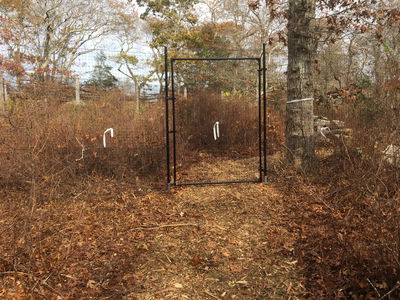
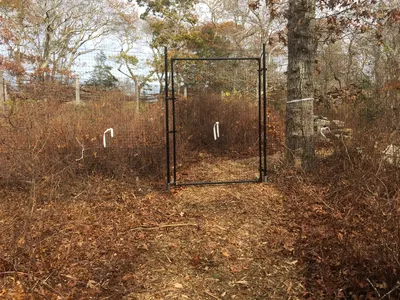


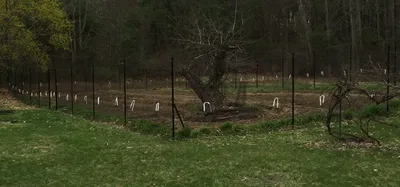

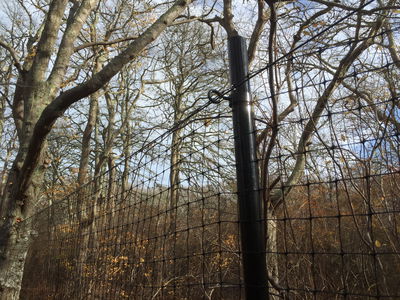
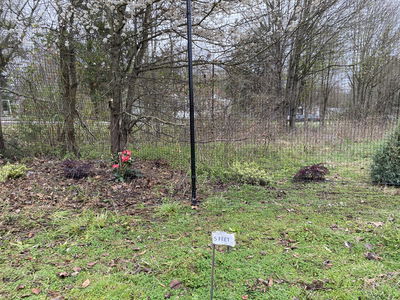

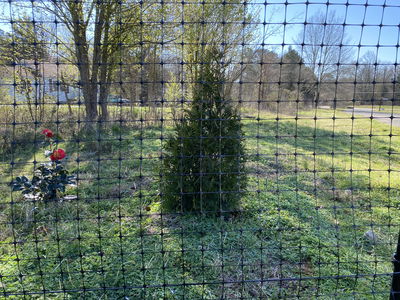
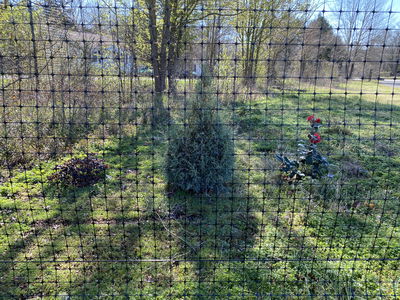

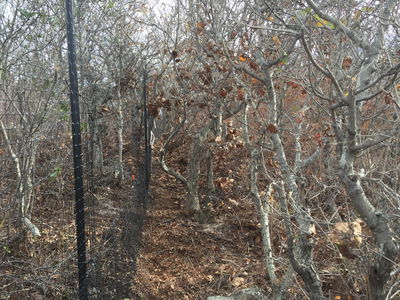


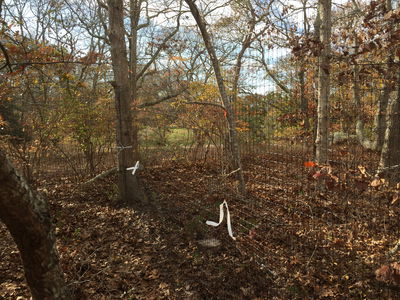
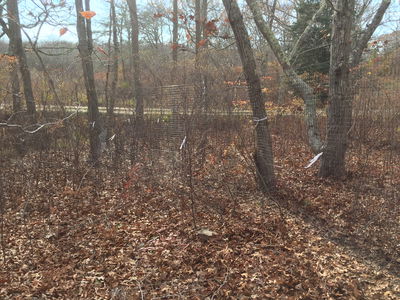
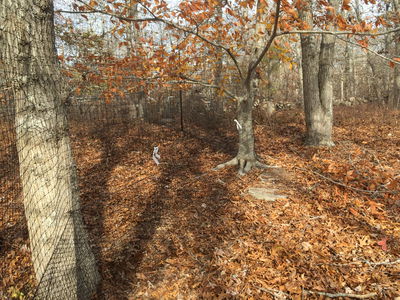

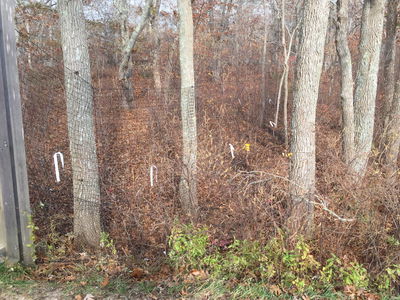

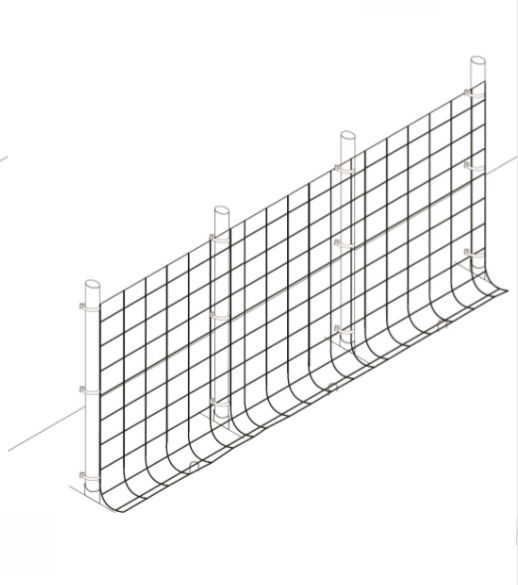
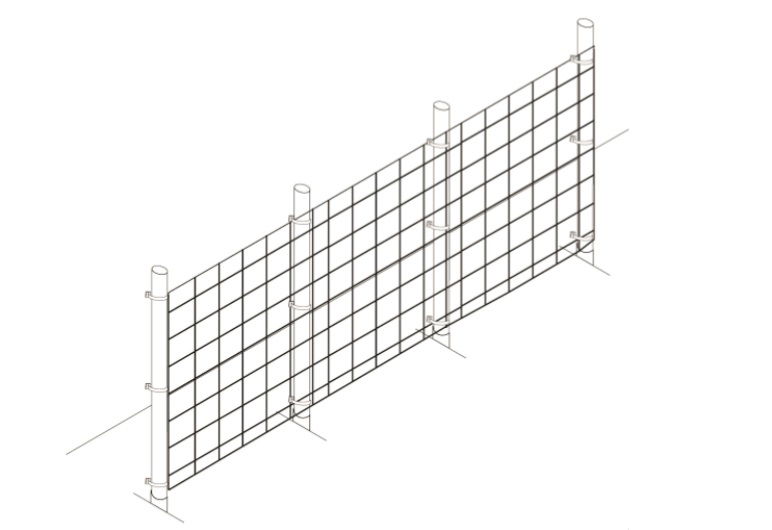



.jpg)
